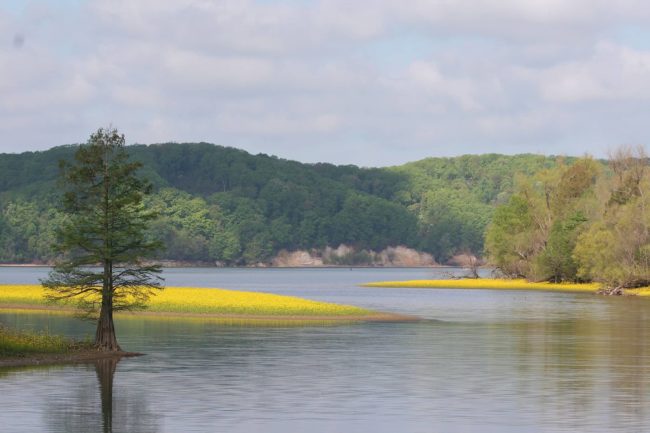
Springville, Tenn.–The U.S. Fish and Wildlife Service, Tennessee NWR Complex has prepared a compatibility determination and appropriateness determination for Bicycle Use, Commercial Fishing and Boating on Tennessee NWR. These compatibility determinations are available for public review and comment.
Bicycle Use to travel open refuge roads is an existing use that is being re-evaluated. Bicycle use is requested by a small user group and has occurred on the refuges for over 20 years with no significant environmental impacts or changes in amount of use during this time span. We have consistently seen less than five bicycle users on the refuges per day and mostly during the summer months. We believe all refuge user groups should have access to the refuge for wildlife-dependent public uses. Bicycle use was found compatible during a review of the Draft Comprehensive Conservation Plan and associated Environmental Assessment and Finding of No Significant Impact and environmental conditions and the use have not changed substantially since the previous analysis. We believe bicycle use on roads will not have any significant impacts on refuges habitats or wildlife and will support priority wildlife dependent recreation uses on the refuges.
The second use being re-evaluated is Commercial Fishing to remove invasive carp and other rough fish from refuge impoundments. This use was evaluated in the 2010 draft Environmental Assessment and Comprehensive Conservation Plan (CCP) for Tennessee NWR and approved through the Regional Director issuance of the Finding of No Significant Impact in 2010. Invasive carp have the ability to deplete the food resource for smaller bait fish which then impacts game fish and other aquatic organisms. Invasive carp and rough fish also cause turbidity in the water that impacts aquatic vegetation which can affect waterfowl and other wading birds. Removal of these invasive species benefits recreational anglers and those coming to the refuge to view wading birds and waterfowl.
The third use being evaluated is boating – both motorized and human powered – on refuge impoundments. Boating has been occurring on the refuge since the impoundments were created. Boating was evaluated through the fishing section of the 2010 draft Comprehensive Conservation Plan. Boating is used by recreational anglers, commercial anglers, for wildlife viewing and photography and for pleasure. The impacts of boating on wintering waterfowl is mitigated by closing all refuge impoundments from November 15 through March 15. Other potential impacts are mitigated by no wake speeds and limiting use to daylight use only.
The Service is seeking public comments on these three draft compatibility determinations. Copies of these draft compatibility determinations are available from the refuge headquarters office in Springville, TN or by contacting the headquarters office at 731-642-2091. Comments on the proposed activity will be accepted until May 6, 2022. You may submit comments in writing to the refuge office at 1371 Wildlife Drive Springville, TN 38256 or by email to Refuge Manager Barron Crawford at barron_crawford@fws.gov.
The U.S. Fish and Wildlife Service is the principal Federal agency responsible for conserving, protecting, and enhancing fish and wildlife and their habitats for the continuing benefit of the American people. The Service manages the 150-million-acre National Wildlife Refuge System comprised of more than 550 national wildlife refuges, thousands of small wetlands, and other special management areas. It also operates 70 national fish hatcheries, 64 fish and wildlife management offices, and 78 ecological services field stations. The agency enforces Federal wildlife laws, administers the Endangered Species Act, manages migratory bird populations, restores nationally significant fisheries, conserves and restores wildlife habitat such as wetlands, and helps foreign governments with their conservation efforts.




